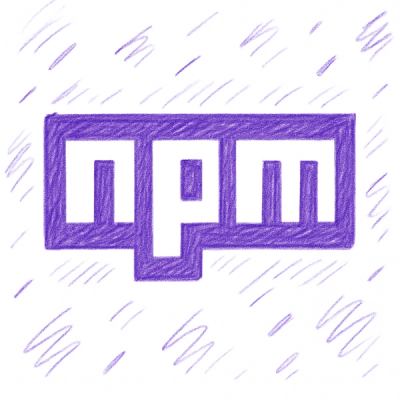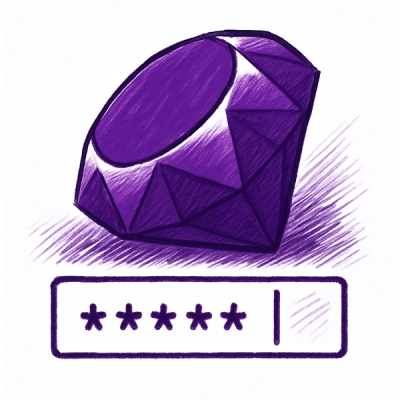
Security News
npm Adopts OIDC for Trusted Publishing in CI/CD Workflows
npm now supports Trusted Publishing with OIDC, enabling secure package publishing directly from CI/CD workflows without relying on long-lived tokens.
Netsuite-sdk-py is a Python SDK. It uses the SOAP client library zeep(https://python-zeep.readthedocs.io/en/master/) for accessing NetSuite resources via the NetSuite SOAP web service SuiteTalk(http://www.netsuite.com/portal/platform/developer/suitetalk.shtml), but hides the complexity from the SDK user.
$ pip install netsuitesdk
There are two ways to access a NetSuite account via web services:
First, setup TBA credentials using environment variables.
# TBA credentials
export NS_ACCOUNT=xxxx
export NS_CONSUMER_KEY=xxxx
export NS_CONSUMER_SECRET=xxxx
export NS_TOKEN_KEY=xxxx
export NS_TOKEN_SECRET=xxxx
The following snippet shows how to use TBA to initialize the SDK.
Note: By default the SDK implementation is using the wsdl version '2019_1', if you wish to use other than the default wsdl version, you can pass an optional wsdl_version. The wsdl_version should be in following format: 'year_version' eg. '2023_1' or '2022_2' etc. From version 3.0.0, the default wsdl_version will be 2024_1.
import os
import itertools
import json
from netsuitesdk import NetSuiteConnection
def connect_tba():
NS_ACCOUNT = os.getenv('NS_ACCOUNT')
NS_CONSUMER_KEY = os.getenv('NS_CONSUMER_KEY')
NS_CONSUMER_SECRET = os.getenv('NS_CONSUMER_SECRET')
NS_TOKEN_KEY = os.getenv('NS_TOKEN_KEY')
NS_TOKEN_SECRET = os.getenv('NS_TOKEN_SECRET')
nc = NetSuiteConnection(
account=NS_ACCOUNT,
consumer_key=NS_CONSUMER_KEY,
consumer_secret=NS_CONSUMER_SECRET,
token_key=NS_TOKEN_KEY,
token_secret=NS_TOKEN_SECRET,
#optional wsdl_version to use version other than '2019_1'
wsdl_version='2023_2'
)
return nc
nc = connect_tba()
# Use get_all methods to get all objects of certain types
currencies = nc.currencies.get_all()
locations = nc.locations.get_all()
departments = nc.departments.get_all()
classifications = nc.classifications.get_all()
subsidiaries = nc.subsidiaries.get_all()
expense_categories = nc.expense_categories.get_all()
employees = nc.employees.get_all()
all_accounts = list(itertools.islice(nc.accounts.get_all_generator(), 100))
accounts = [a for a in all_accounts if a['acctType'] == '_expense']
vendor_bills = list(itertools.islice(nc.vendor_bills.get_all_generator(), 10))
vendors = list(itertools.islice(nc.vendors.get_all_generator(), 10))
vendor_payments = nc.vendor_payments.get_all()
data = {
'accounts': accounts,
'classifications': classifications,
'departments': departments,
'locations': locations,
'currencies': currencies,
'vendors': vendors,
'vendor_bills': vendor_bills,
'subsidiaries': subsidiaries,
'expense_categories': expense_categories,
'employees': employees,
'vendor_payments': vendor_payments
}
with open('/tmp/netsuite.json', 'w') as oj:
oj.write(json.dumps(data, default=str, indent=2))
# There are also generator methods to iterate over potentially large lists
for c in nc.currencies.get_all_generator():
print(c)
# Get a specific object
nc.currencies.get(internalId='1')
# Post operation is only supported on vendor_bills, expense_reports, journal_entries and vendor_payments currently (see tests on how to construct vendor bill, expense report and journal entry)
vb = {...}
nc.vendor_bills.post(vb)
er = {...}
nc.expense_reports.post(er)
je = {...}
nc.journal_entries.post(je)
vp = {...}
nc.vendor_payments.post(vp)
### Upsert Files
file = open('receipt.pdf', 'rb').read()
created_folder = nc.folders.post(
{
"externalId": 'new-folder',
"name": 'Receipts'
}
)
uploaded_file = nc.files.post({
"externalId": "receipt 1",
"name": 'receipt.pdf',
'content': file,
'fileType': '_PDF',
"folder": {
"name": None,
"internalId": 695,
"externalId": 'new-folder',
"type": "folder"
}
}
)
Note: NetSuite requires two-factor authentication (2FA) for all Administrator and other highly privileged roles in all NetSuite accounts. Instead, you can login with a non-highly privileged role or use token based authentication (TBA) with your requests. For TBA, see below.
If login fails, a NetSuiteLoginError is thrown.
For more information about NetSuite authentication, see: (https://docs.oracle.com/cloud/latest/netsuitecs_gs/NSATH/NSATH.pdf)
To run integration tests, you will set both login and TBA credentials for an actual Netsuite account with the right permissions.
# TBA credentials
export NS_ACCOUNT=xxxx
export NS_CONSUMER_KEY=xxxx
export NS_CONSUMER_SECRET=xxxx
export NS_TOKEN_KEY=xxxx
export NS_TOKEN_SECRET=xxxx
python -m pytest test/integration
Currently the code coverage is at 90%
To run integration tests on a newly added / modified file
python -m pytest -vv test/integration/test_filename.py;
To get code coverage report, run this command:
python -m pytest --cov=netsuitesdk
<snipped output>
Name Stmts Miss Cover
----------------------------------------------------------------------------
netsuitesdk/__init__.py 4 0 100%
netsuitesdk/api/__init__.py 0 0 100%
netsuitesdk/api/accounts.py 6 0 100%
netsuitesdk/api/adv_inter_company_journal_entries.py 7 0 100%
netsuitesdk/api/base.py 90 9 90%
netsuitesdk/api/classifications.py 6 0 100%
netsuitesdk/api/currencies.py 10 0 100%
netsuitesdk/api/custom_record_types.py 11 0 100%
netsuitesdk/api/custom_records.py 17 0 100%
netsuitesdk/api/customers.py 21 0 100%
netsuitesdk/api/departments.py 6 0 100%
netsuitesdk/api/employees.py 34 0 100%
netsuitesdk/api/expense_categories.py 6 0 100%
netsuitesdk/api/expense_reports.py 58 2 97%
netsuitesdk/api/files.py 23 0 100%
netsuitesdk/api/folders.py 17 0 100%
netsuitesdk/api/journal_entries.py 41 0 100%
netsuitesdk/api/locations.py 6 0 100%
netsuitesdk/api/price_level.py 6 0 100%
netsuitesdk/api/projects.py 6 0 100%
netsuitesdk/api/subsidiaries.py 6 0 100%
netsuitesdk/api/tax_groups.py 6 0 100%
netsuitesdk/api/tax_items.py 6 0 100%
netsuitesdk/api/vendor_bills.py 55 1 98%
netsuitesdk/api/vendor_payments.py 46 1 98%
netsuitesdk/api/vendors.py 21 0 100%
netsuitesdk/connection.py 68 0 100%
netsuitesdk/internal/__init__.py 0 0 100%
netsuitesdk/internal/client.py 305 79 74%
netsuitesdk/internal/constants.py 4 0 100%
netsuitesdk/internal/exceptions.py 16 3 81%
netsuitesdk/internal/netsuite_types.py 2 0 100%
netsuitesdk/internal/utils.py 40 4 90%
----------------------------------------------------------------------------
TOTAL 950 99 90%
To get an html report, run this command:
python -m pytest --cov=netsuitesdk --cov-report html:cov_html
We want to maintain code coverage of more than 90% for this project at all times.
Documentation can be found in the docs/_build/html folder (open index.html) and soon in readthedocs.
For contributors: to build the documentation (cd to /docs and) run make buildapi
as well as make html
We are actively accepting contributions. Please mail shwetabh.kumar@fylehq.com if you wish to collaborate on this. (Please write test cases for new additions.)
FAQs
Python SDK for accessing the NetSuite SOAP webservice
We found that netsuitesdk demonstrated a healthy version release cadence and project activity because the last version was released less than a year ago. It has 1 open source maintainer collaborating on the project.
Did you know?

Socket for GitHub automatically highlights issues in each pull request and monitors the health of all your open source dependencies. Discover the contents of your packages and block harmful activity before you install or update your dependencies.

Security News
npm now supports Trusted Publishing with OIDC, enabling secure package publishing directly from CI/CD workflows without relying on long-lived tokens.

Research
/Security News
A RubyGems malware campaign used 60 malicious packages posing as automation tools to steal credentials from social media and marketing tool users.

Security News
The CNA Scorecard ranks CVE issuers by data completeness, revealing major gaps in patch info and software identifiers across thousands of vulnerabilities.